The Audi E-Tron GT Is Here And The RS Version Makes 637bhp
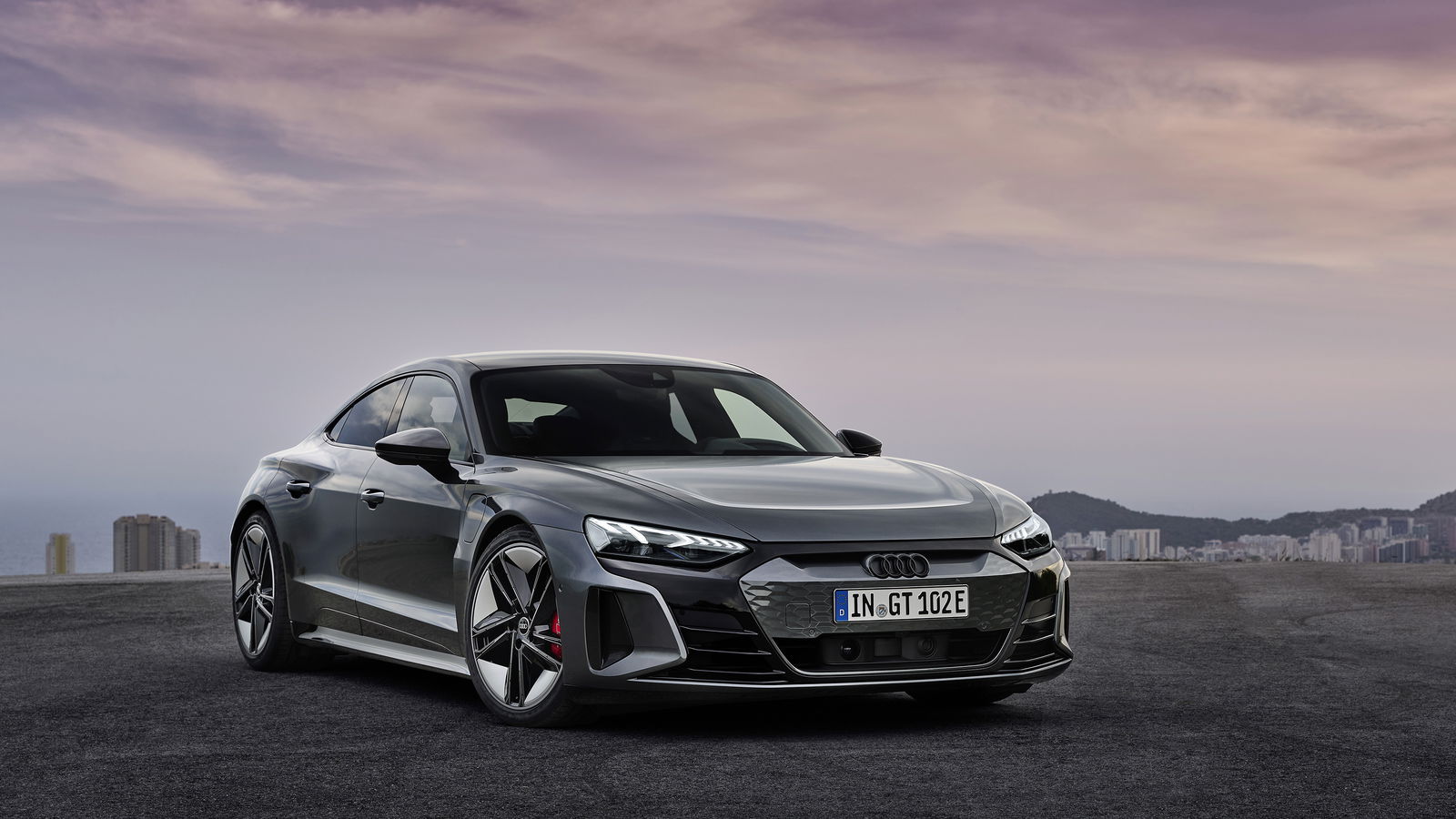
Yes, those are number plates you see on the front and rear of this Audi E-Tron GT, proving that this is indeed a production car. It’s as good as identical to the concept version Ingolstadt rolled out at the LA Auto Show a couple of years ago, a vehicle it lent to Tony Stark not long after.
It hasn’t lost any power since then, either. In fact, it’s pokier: the RS E-Tron GT develops 590bhp, jumping to 637bhp if launch control is engaged. Do so, and 0-62mph arrives in 3.3 seconds, on to an electronically-limited top speed of 155mph.
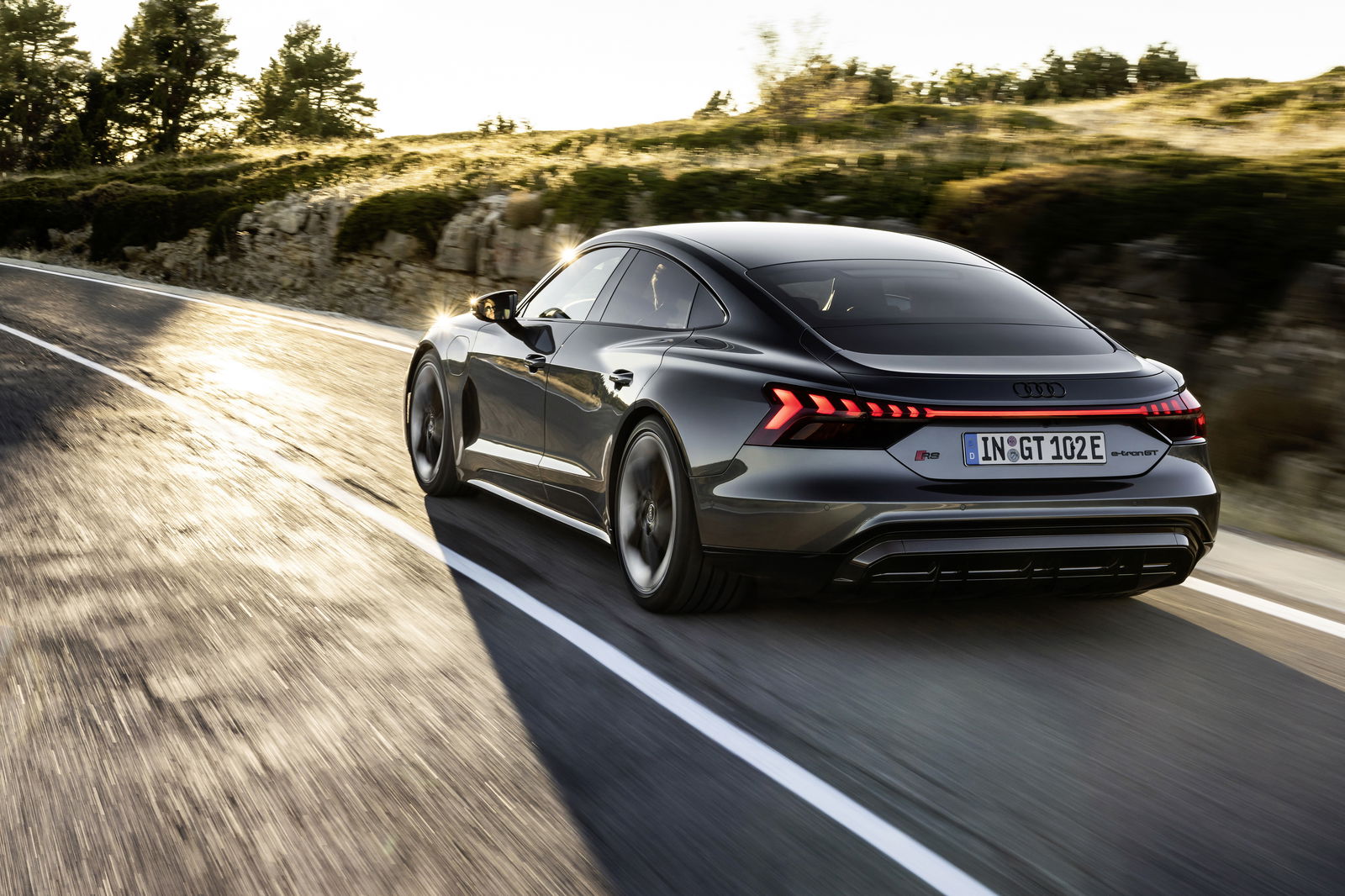
The entry-level E-Tron GT is still no slouch, with its 469bhp output making for a 0-62mph time of 4.1 seconds. Whichever you go for, there’s a 93kWh battery pack (83kWh useable power) made up of 33 cell modules living under the car’s floor. As with Porsche’s closely related Taycan, there are gaps in the battery pack called ‘foot garages’, allowing for a nice, low roofline and ample headroom.
In every GT you’ll find a pair of ‘permanently excited’ synchronous motors, one for each axle. The rear motor unit, the more powerful of the two, drives the wheels via a two-speed gearbox. The short-ratio first gear is only used for launch control shenanigans, with the E-Tron GT setting off in second gear the rest of the time.
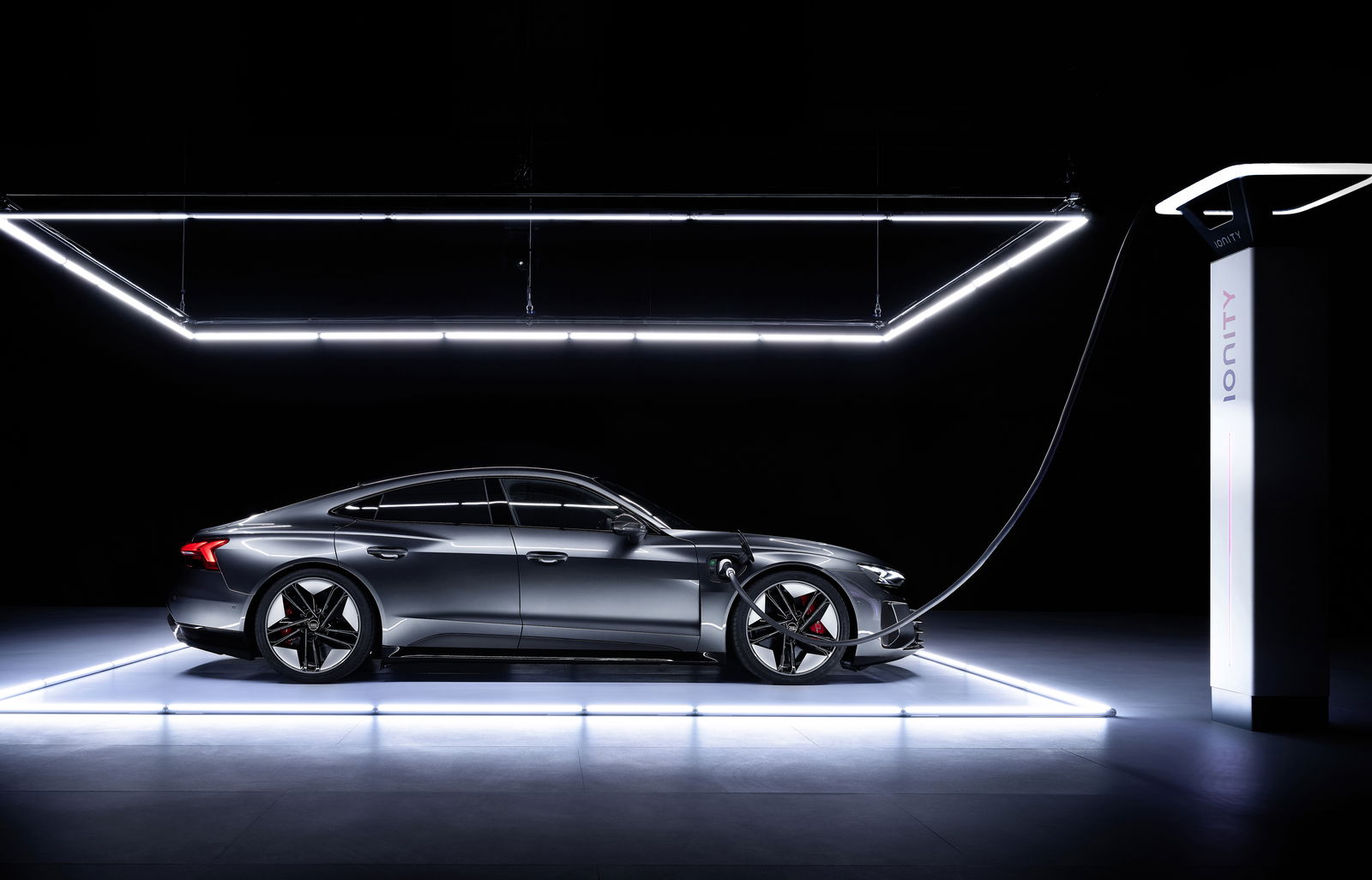
So long as you’re not messing about with launch control every few minutes, you’ll get a (predicted) range over 295 miles in the E-Tron GT, and 280 in the RS. Average consumption for the former version is 19.6–18.8 kWh per 62 miles, with the latter managing 20.2–19.3 kWh. For comparison, the E-Tron SUV gets through 24.2 kWh over the same distance.
When it’s time to plug in, peak charging capacity of 270kW means you can add 62 miles of range in around five minutes, and juice the battery from five to 80 per cent in just under 23 minutes. It has an 11kW onboard charger (with a 22kW option available soon), making overnight charges possible with a home-installed wall box.
Both models get double-wishbone suspension front and rear, with the RS gaining standard-fit three-chamber air suspension which can drop the body by up to 22mm or lift it by 20mm. The system is optional on the base GT, which otherwise sticks with a more conventional adaptive setup.
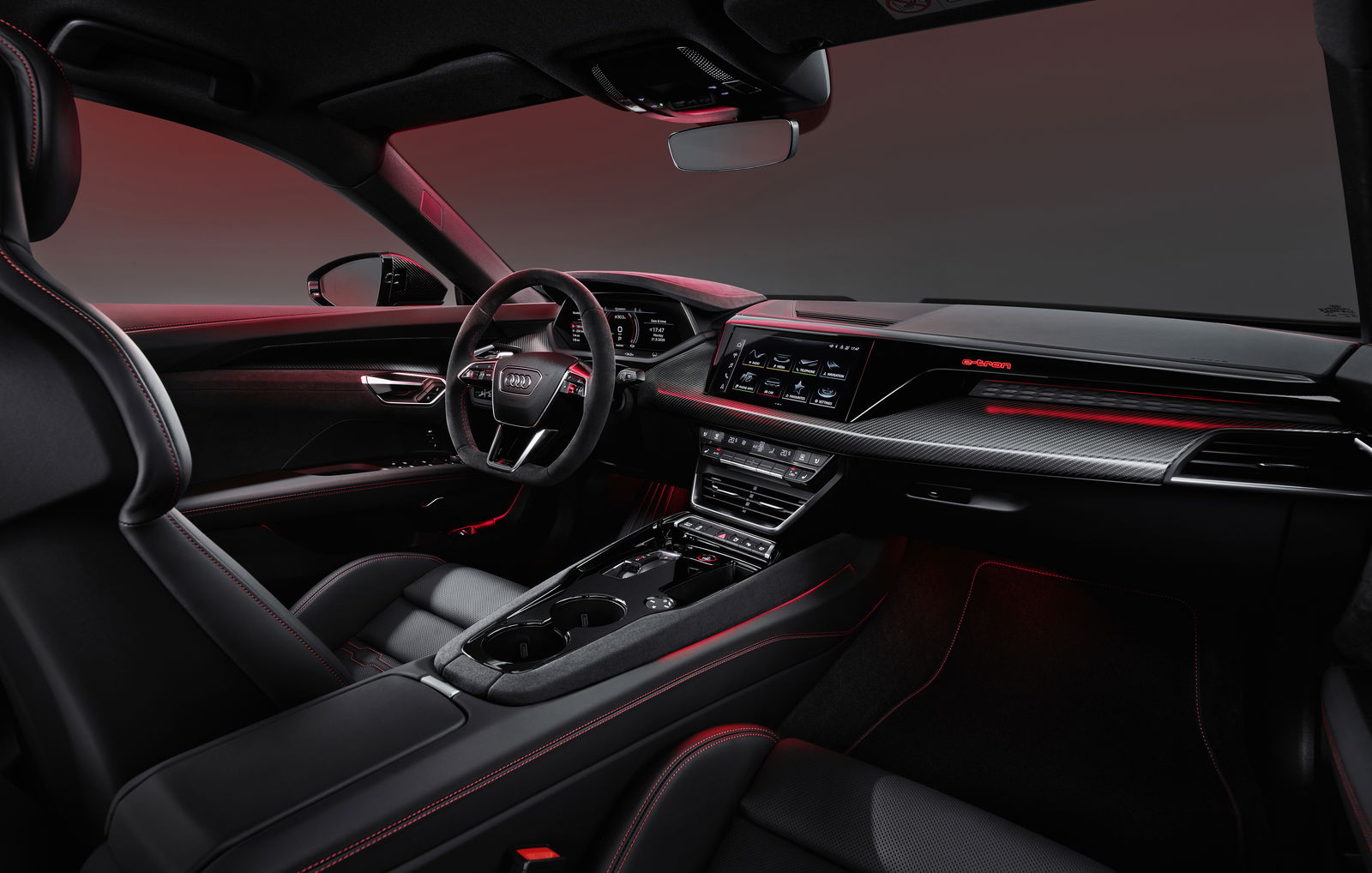
The kitted-out, Vorsprung-trimmed E-Tron GT gets all-wheel steering, as does the RS. This turns the rear wheels up to 2.8 in the opposite direction to the fronts under 31mph, and in the same direction when you’re over those speeds.
In terms of the steering at the front axle, Audi has tuned it to be lighter than it is in the Taycan. The thinking behind this and the use of a bigger steering wheel is to pitch the E-Tron as the Porsche’s more comfort-oriented relative, we were told in a digital press conference ahead of the car’s launch.
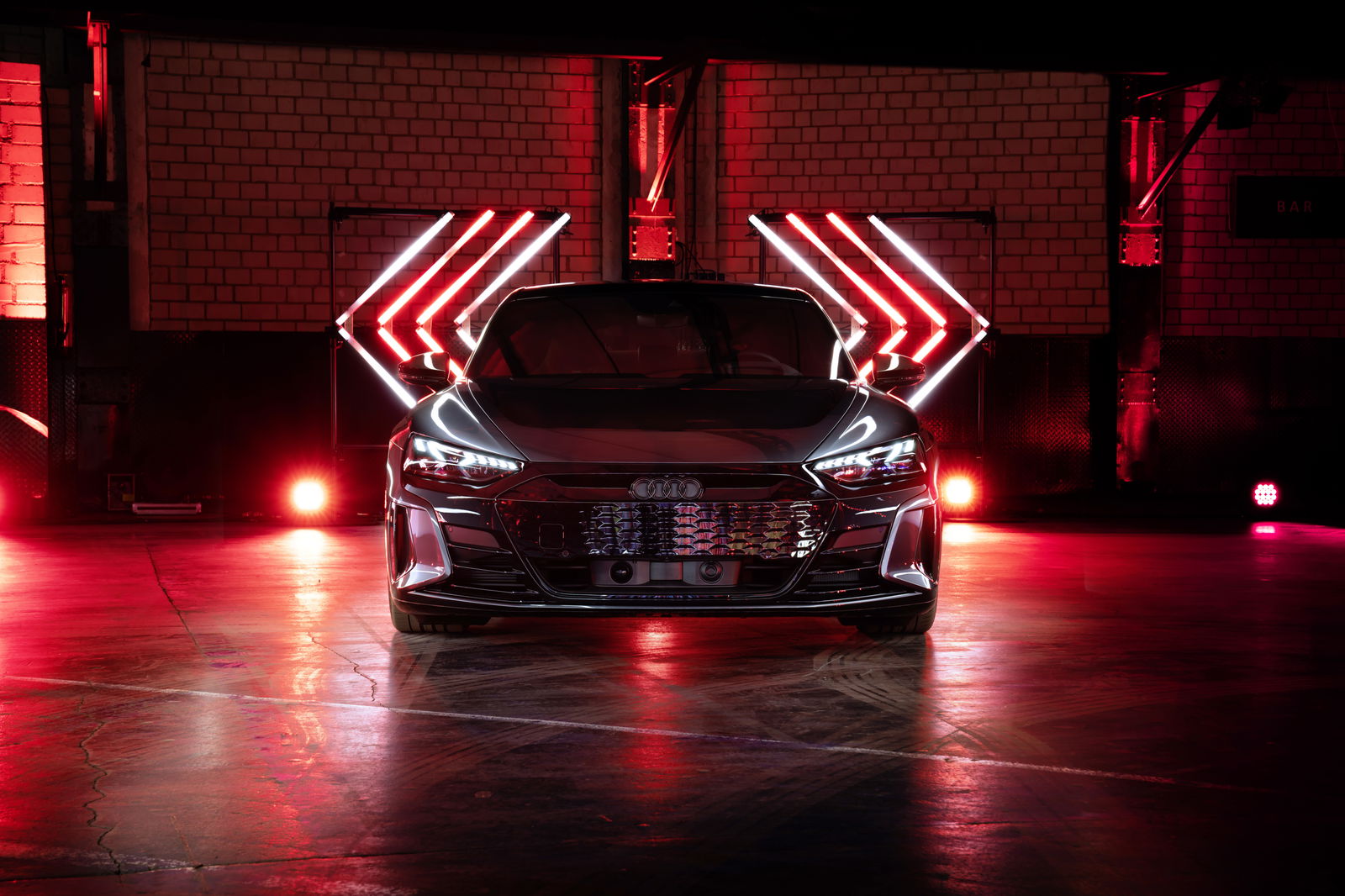
Inside, the dashboard has a neat double-decker design, with a 10.1-inch touchscreen infotainment screen bridging the two, paired with a 12.3-inch digital cockpit. Audi thankfully hasn’t bothered with the irritating lower display it uses on a lot of models, with the GT instead using (praise be!) physical climate controls. Unlike the Taycan, the Audi also gets manual vent direction controls.
Want one? The E-Tron GT opens at £79,900, rising dramatically to £106,000 for the Vorsprung. The cheapest RS is £110,950, with the Carbon Black and Carbon Vorsprung Editions weighing in at £124,540 and £133,340 respectively.



Comments